- Home
- Arthur Miller
Collected Essays Page 2
Collected Essays Read online
Page 2
Initially intended as a preface to A View from the Bridge and A Memory of Two Mondays, “On Social Plays” keenly articulates Miller’s understanding that true social drama, which in his opinion is the most valuable kind of drama to write, must explore the notion of how we can live as both individuals and contributing members of society. He also connects this outlook to his vision of tragedy. Aside from challenging limiting definitions of realism and expressionism, “The Family in Modern Drama” explains the difference between plays that just deal with family and those that take on a wider society, with his stated goal being a genre that combines the two by using the family as a microcosmic study of the macrocosm. “There lies within the dramatic form,” he boldly concludes, “the ultimate possibility of raising truth-consciousness of mankind to a level of such intensity as to transform those who observe it.” For Miller, drama is clearly all about connections, between private and social lives, art and form, the past, present, and future. While 1958’s “The Shadows of the Gods” succinctly outlines various influences on Miller’s work and his connection to other American dramatists, its emphasis is on Miller’s agenda to revitalize what he viewed as a theater fast becoming “absurd, repetitious, and decayed.” Disdaining narrow introspection or comforting sentimentality, he asks for plays that are infused with a deeper sociopolitical context. Using his experiences during the Great Depression and knowledge of the Holocaust as springboards, Miller shares two of his foundational beliefs. First, in the power of a past from which no one can truly escape, which ensures the birds will always come “home to roost,” and, second, that each person has a potential capacity for evil and needs to accept this fact. In Miller’s worldview, no one can be truly innocent, and it is foolish for any dramatist to pretend otherwise.
While the above three essays best relay Miller’s essential beliefs regarding human nature, and the place and promise of drama in the world, other, lesser-known pieces, such as “Ibsen and the Drama of Today,” “Tennessee Williams’ Legacy: An Eloquence,” “The Good Old American Apple Pie,” and “Notes on Realism” place those theories more carefully within the frame of other writers, theatrical trends, and exigencies. The pieces on Ibsen and Williams offer excellent encapsulations of what it is in each of these playwrights that Miller most admires, while “Good Old Apple Pie” focuses on Miller’s disdain for theatrical censorship, especially within a nation purporting itself to be a democracy. Finally, “Notes on Realism” warns against oversimplifying what is meant by the term, and asserts the need for bedrock realism in drama for it to be fully effective. This essay is clearly a rewrite of the earlier “About Theater Language,” but here Miller has both honed and broadened his original argument with additional commentary, and left out specific observations of The Last Yankee. “Subsidized Theatre” is included as most representative of several essays Miller wrote bemoaning the inadequacies and shortfalls of the ways in which theater is treated and perceived in America, and his suggested solutions.
Another important aspect of Miller’s work that is becoming more widely recognized is his close attention to how language is used to dramatic purpose. The essays “About Theater Language” and “On Screenwriting and Language: Introduction to Everybody Wins” consider the demands of the written word on both stage and screen. Miller suggests that prose is the language of “the individual and private life” and poetry “the language of the man in crowds, in society.” Suggesting that prose provides a play’s feeling and poetry its thought, Miller asserts a need for the language of plays to maintain a balance between the two to be the most effective. In the playwright’s opinion, the realism of a play, created through the natural speech of its characters, while necessary to engage an audience, should only ever pertain to its veneer, for a play that does not offer deeper challenges through a stylized, poetic lift in its language is doomed to be merely entertaining. “About Theater Language” continues to illustrate these points using The Last Yankee. Given the difference in media, in “On Screenwriting and Language,” Miller suggests that writing for films becomes less about words and more about images, as metaphoric language is replaced by visual symbolism. But while the screenwriter subsequently focuses more on realistic dialogue, the end product, ironically, has the potential to be more successfully poetic than a play.
ON HIS WORKS
While it is useful to consider a playwright’s broader view of his profession, it is also advantageous to have a line into their viewpoint regarding what they themselves have written. Thus, this collection includes several essays that Miller wrote referencing specific plays of his own, from early works, including Golden Years and The Man Who Had All the Luck to later ones, such as The Archbishop’s Ceiling and The American Clock. Given the sheer volume of Miller’s output, not every work is included here, but the best known are given ample coverage, and several others are included to represent the wide range of his oeuvre. Presented chronologically according to when the works they discuss were produced or published, the pieces selected for such plays as Death of a Salesman and The Crucible were written over a span of more than forty years to offer an evolving view of Miller’s perception of their prolonged impact. Given the consistent aims and tropes of Miller’s drama, many of the explanations and opinions in these pieces could be applied to other of his works than the ones highlighted for commentary.
Of the early works, the introduction to The Golden Years and The Man Who Had All the Luck explains each play’s metaphorical basis, how they relate to each other, and how well they hold up. Meanwhile, in “The Face in the Mirror: Anti-Semitism Then and Now” Miller explains the genesis of his 1945 novel, Focus, and considers how far its concerns continue to apply forty years on, especially in the light of the creation of Israel and the changing map of Jews throughout the world. While Miller wrote about his conception of All My Sons extensively in “Introduction to the Collected Plays,” the extract “Belief in America,” from an early nonfiction book he published in 1944, Situation Normal . . . , offers a telling experience that clearly gave Miller the idea for the army experiences of All My Son’s Chris Keller, beyond the heroism of Miller’s own brother, Kermit. The book, as a whole, with its central focus on the difficulties of returning veterans, offers a still timely depiction of the price those who go to war continue to pay, and is an early example of Miller’s social concerns beyond the stage.
In 1950, Miller was asked by Fredric March and Florence Eldridge to write a translation of Henrik Ibsen’s Enemy of the People that they could perform on Broadway as a subtle complaint against the smear campaign they felt was being developed against them during that period of the “Red Scare.” In his preface to this adaptation, Miller explains his aim to make the play relevant to Americans by focusing his translation on the “question of whether the democratic guarantees protecting political minorities ought to be set aside in time of crisis” to try to expose the collateral damage that comes with majority rule. In the later piece “Ibsen’s Warning,” Miller points out how the play has become even more relevant over the years as pollution and contamination have become so much more prevalent issues than in Ibsen’s day.
Death of a Salesman and The Crucible are Miller’s best-known plays, and in addition to the detailed descriptions he gives regarding his conception of each in his “Introduction to the Collected Plays,” they are also represented by several pieces, written over a period of years, to illustrate both plays’ continued relevance and impact. The extract from Miller’s 1987 autobiography, Timebends: A Life, is the best rendition of the play’s evolution in Miller’s mind, and its subsequent creation on the actual stage with the aid of Elia Kazan. His later preface from the 1991 edition of Salesman in Beijing—the journal Miller wrote in 1984 to relate his experience directing a landmark production of Salesman at the Beijing People’s Arts Theatre in China—alongside a 1999 piece “Salesman at Fifty,” evoke the wide and long-lasting impact of the play, seemingly applicable to all cultures and periods of history.
Four pieces that discuss The Crucible have been included: “Brewed in The Crucible,” “Again They Drink from the Cup of Suspicion,” “It Could Happen Here—And Did,” and “The Crucible in History.” These collectively assert the play’s relevance beyond McCarthyism and Miller’s intent to write a play that conveyed a universal relevance. The longevity and growth of its production history fully support such claims, and in “It Could Happen Here” Miller suggests possible reasons for its endurance. “The Crucible in History” is included as Miller’s fullest explanation of the cultural forces and historical context of the 1950s that impacted The Crucible when it was being written, while also allowing that when these conditions replay in rising dictatorships elsewhere, they prove the play remains relevant.
Miller’s introduction to A View from the Bridge and foreword to After the Fall, as well as his discussion of “Guilt and Incident at Vichy” and “The Price—The Power of the Past,” all offer discerning perceptions of the plays and the personal and social concerns that influenced their creation. His explanations of the development of A View from the Bridge from a one- to a two-act play, the relation of Lee Harvey Oswald and the biblical Adam to After the Fall, the connections between Nazis and those who killed the three civil rights workers in 1964 Mississippi to what occurs in Incident at Vichy, and his view of The Price as a response to both the growing absurdism of the 1960s and to Vietnam expand our understanding of each play’s wider resonance. Originally published as “Our Guilt for the World’s Evil,” “Guilt and Incident at Vichy” also asserts Miller’s central belief that anyone who stands by and allows evil to occur is as guilty as the perpetrators. In a similar way, “Conditions of Freedom: Two Plays of the Seventies” offers a telling picture of the social milieu that spawned both The Archbishop’s Ceiling and The American Clock. The title reflects Miller’s belief in the need for a social contract before any freedom can be safely entertained. Post-Watergate and having experienced the surveillance undergone by so-called dissident writers in other countries, Miller wrote The Archbishop’s Ceiling to expose the potential damage caused by such polarizing conduct, and to argue for the freedom of art as paramount to human advancement. Making analogies between the selfish and hedonistic 1920s and 1970s, Miller explains how he wrote about the Great Depression in The American Clock as a warning of what to expect if behaviors were not altered, but also as an example of how an active democracy might be able to save the day. In all cases we see clearly how Miller’s plays addressed key issues of the periods in which they were written, even while illustrating issues of the past and maintaining an evident prescience of the future. It is partly this ability to make clear connections between past, present, and future that allows his works their continued resonance and relevance.
The section on specific plays concludes with the brief preface for Mr. Peters’ Connections, a play Miller wrote toward the end of his career but one whose very construction, described here, provides an interesting connection back to both Death of a Salesman and After the Fall, earlier plays through which Miller strove to create an entirely new form of drama that convincingly conveyed the simultaneity of past, present, and even future in an individual’s psyche. It speaks to Miller’s lifelong desire to perfect a new form of theater that would truly allow the audience to see the complexity inside a character’s head and transcend the constraints of strict chronology. For Miller, time was both fluid and mutable, and Mr. Peters’ Connections was a play imbued with that understanding.
ON SOCIETY AND POLITICS
Miller, however, did not just offer insights into the theater and his own work, but also contributed important essays on a variety of sociopolitical topics, including juvenile delinquency, McCarthyism and other American social issues and politics, the Holocaust, and world politics. Often outspoken, he consistently supported his arguments using his humanistic sympathies, which allowed him to view each case beyond what he saw as narrow nationalistic beliefs. While remaining staunchly proud of the potential of American democracy, he continued to criticize whenever he saw that falling short, and he became to all intents a true citizen of the world. He was also not above a few deliciously satirical pieces regarding such matters as communist paranoia, the death penalty, and congressional lobbying. While these pieces offer insights into the man beyond the plays, they also flesh out the attitudes and beliefs that helped shape Miller’s art.
Juvenile Delinquency
One little-known aspect of American culture about which Miller was concerned for much of his life was difficulties regarding juvenile delinquency, which he viewed as the country’s “most notable and violent manifestation of social nihilism” and in urgent need of address. During 1955, he spent several weeks among youth gangs in New York collecting material for a documentary, but fears of a socialist agenda prevented it from getting the necessary council approval for production. Three years later he published “Bridge to a Savage World” in Esquire, describing the intent and content of the project. Recognizing that much of the problem was being caused by the supreme negativity under which many of these supposed thugs had been raised, Miller insists that love and compassion are insufficient cures, and a new kind of engaged social work needs to be encouraged that moves away from the office and meets the youths on their own terms in the streets. Those willing to take such a risk might be able to offer the bridge that can lead such youths back to productive, safer lives. In the “The Bored and the Violent,” Miller responds to a book he had recently read that, while a little disorganized, at least presented delinquents in a refreshingly unromantic way. Differentiating between rich and slum delinquents, Miller posits that delinquents of all kinds are still being misunderstood, and that many are less hardened rebels than bored and frightened teenagers who are incapable of independent thought and join gangs as an act of conformism rather than rebellion. If viewed anew in this light, and approached from a psychological or even spiritual rather than physically punitive standpoint, he suggests that better progress might be made against the problems of delinquency.
The McCarthy Era
“Many Writers: Few Plays,” “The Night Ed Murrow Struck Back,” and “1956 and All This” collectively offer insights into Miller’s take on the McCarthy era and the trials of living under the dangerous bludgeon of the House Un-American Activities Committee and “Red Scare” paranoia of the period. “Many Writers: Few Plays” points to the ways in which the pressures of the McCarthy era witch hunts (as they are now seen), led to the virtual silencing of many American writers out of fear of being targeted, and calls for an end to such temerity. “The Night Ed Murrow Struck Back” reflects on what Miller felt was the outlandish lunacy of McCarthyism, while acknowledging its hold and its impact on himself. The playwright’s admiration of Murrow comes from his recognition of the broadcaster’s refusal to be cowed by the climate of fear that had been created in the country, and his optimistic support of American values that had in reality all but disappeared. “1956 and All This” critiques isolationist American foreign policy of the period and calls for a better understanding between cultures, which Miller suspects would lessen the nation’s fears about communism and a third world war. America, he feels, would be better off helping those in poverty than continuing to pursue a cold war.
Conditions in America
Always deeply concerned with the conditions of living in America, Miller’s Jewish upbringing, albeit more secular than religious, is crucial to his outlook on the world and his art. The early essay “Concerning Jews Who Write,” written in 1948 for Jewish Life but long overlooked, outlines Miller’s identification as a Jew, and his commitment to the defense of Jewish culture. Taking a broader approach, in “Miracles” Miller offers his opinions on the sociopolitical situation in America in general, from the 1930s through to the 1960s, drawing connections between the different decades.
Miller became personally involved in American politics when he agreed to serve as Eugene McCarthy’s delegate at the 1968 Democratic National Conventi
on in Chicago. Beset by internal disagreement and external rioting, “The Battle of Chicago: From the Delegates’ Side” reports on Miller’s experience. Passing commentary on the damaging lack of communication between all parties involved, Miller turns this descriptive piece into a general defense of the right to freedom of speech, and a call for a stronger commitment toward morality and substance among politicians. Just as Henrik Ibsen once presented the “life-lies” of individuals who created alternative realities for themselves to avoid facing unpleasant truths, “The Limited Hang-Out: The Dialogues of Nixon as a Drama of the Antihero” exposes what Miller essentially saw as the growing “life-lie” running through the American political system. He points to the rottenness of politicians he saw as ruining a decent political system by constantly trying to blame others rather than take personal responsibility. If Nixon had only been honest, he suggests, he might have saved himself, but it seemed not in his nature to be so.

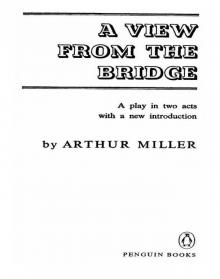 A View From the Bridge: A Play in Two Acts
A View From the Bridge: A Play in Two Acts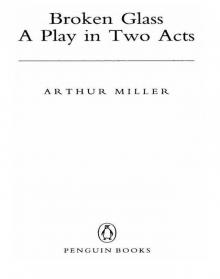 Broken Glass
Broken Glass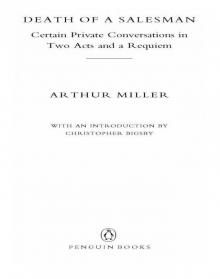 Death of a Salesman
Death of a Salesman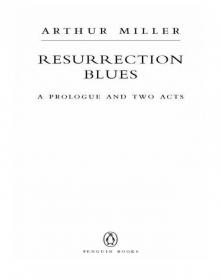 Resurrection Blues
Resurrection Blues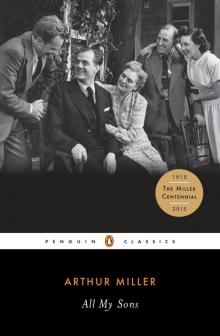 All My Sons
All My Sons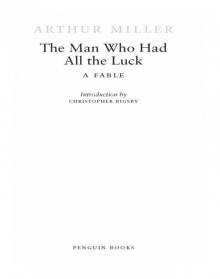 The Man Who Had All the Luck
The Man Who Had All the Luck Presence: Stories
Presence: Stories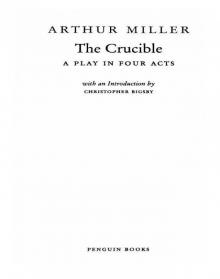 The Crucible
The Crucible Collected Essays
Collected Essays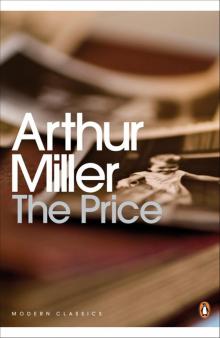 The Price
The Price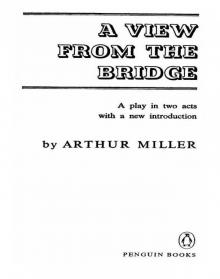 A View from the Bridge
A View from the Bridge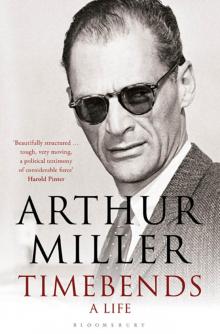 Timebends
Timebends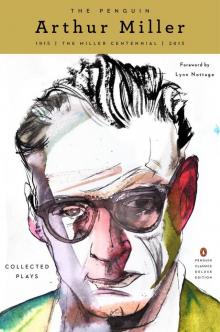 The Penguin Arthur Miller
The Penguin Arthur Miller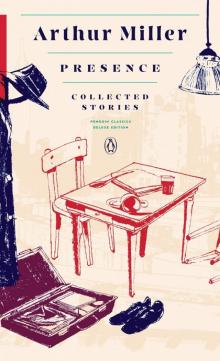 Presence
Presence